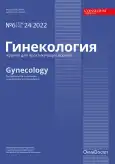Применение методов интерпретации нейронных сетей для анализа гистологических изображений патологических процессов молочной железы
- Авторы: Фомина А.В.1, Борбат А.М.2, Карпулевич Е.А.3, Наумов А.Ю.3
-
Учреждения:
- ФГАОУ ВО «Московский физико-технический институт (национальный исследовательский университет)»
- ФГБУ «Государственный научный центр Российской Федерации – Федеральный медицинский биофизический центр им. А.И. Бурназяна» ФМБА России
- ФГБУН «Институт системного программирования им. В.П. Иванникова» РАН
- Выпуск: Том 24, № 6 (2022)
- Страницы: 529-537
- Раздел: ОРИГИНАЛЬНАЯ СТАТЬЯ
- URL: https://journals.rcsi.science/2079-5831/article/view/148278
- DOI: https://doi.org/10.26442/20795696.2022.6.201990
- ID: 148278
Цитировать
Полный текст
Аннотация
Обоснование. Нейронные сети активно используются в цифровой патологии для анализа гистологических снимков и поддержки принятия врачебных решений. Популярным подходом является решение задачи классификации, где в качестве ответов модели выдают только метки классов. Однако полезно понимать, какие области изображения сильнее всего влияют на ответ модели. Эту проблему помогают решить методы интерпретации машинного обучения.
Цель. Выяснить, насколько согласованы друг с другом разные методы интерпретации нейронных сетей в задаче классификации гистологических изображений молочной железы, и получить экспертную оценку результатов исследуемых методов.
Материалы и методы. Проведены предварительный анализ и предобработка имеющегося набора данных, на которых обучены заранее выбранные нейросетевые модели. Применены существующие методы визуализации областей внимания обученных моделей на простых для понимания данных, после чего стало возможным убедиться в правильности их использования. Те же нейросетевые модели обучены на гистологических данных, и выбранные методы интерпретации применены к задаче классификации гистологических изображений, после чего получена оценка согласованности результатов использованных методов между собой и экспертная оценка результатов.
Результаты. В данной работе исследовано несколько методов интерпретации машинного обучения на примере двух различных архитектур нейронных сетей и наборе гистологических изображений патологических процессов молочной железы. Результаты обучения моделей ResNet18 и ViT-B-16 на наборе гистологических изображений на тестовой выборке: метрика Accuracy 0,89 и 0,89, метрика ROC_AUC 0,99 и 0,96 соответственно. Оценка полученных результатов проводилась экспертом при помощи инструмента Label Studio. Для каждой пары картинок эксперту предлагалось выбрать один наиболее подходящий, по его мнению, ответ – «да» или «нет» – на вопрос «Соответствует ли большинство выделенных областей классу Malignant?». Доля ответов «да» для категории ResNet_Malignant – 0,56; для ViT_Malignant – 1,0.
Заключение. Проведены эксперименты по интерпретируемости с двумя различными архитектурами: сверточной сетью ResNet18 и сетью с механизмом внимания ViT-B-16. Результаты обученных моделей визуализированы с помощью методов GradCAM и Attention Rollout соответственно. Сначала эксперименты проведены на простом для интерпретации наборе данных с целью убедиться в правильности их использования. Затем методы применены к набору гистологических изображений. На простых для понимания снимках (изображениях котов) сверточная сеть больше согласована с восприятием человека, а на гистологических изображениях рака молочной железы – наоборот, ViT-B-16 дал сильно более близкие к восприятию эксперта результаты.
Ключевые слова
Полный текст
Открыть статью на сайте журналаОб авторах
Анна Владимировна Фомина
ФГАОУ ВО «Московский физико-технический институт (национальный исследовательский университет)»
Email: fomina@ispras.ru
ORCID iD: 0000-0002-2269-0271
студентка ФГАОУ ВО МФТИ
Россия, МоскваАртем Михайлович Борбат
ФГБУ «Государственный научный центр Российской Федерации – Федеральный медицинский биофизический центр им. А.И. Бурназяна» ФМБА России
Email: aborbat@yandex.ru
ORCID iD: 0000-0002-9699-8375
канд. мед. наук, доц. каф. патологической анатомии ФГБУ «ГНЦ ФМБЦ им. А.И. Бурназяна»
Россия, МоскваЕвгений Андреевич Карпулевич
ФГБУН «Институт системного программирования им. В.П. Иванникова» РАН
Автор, ответственный за переписку.
Email: karpulevich@ispras.ru
ORCID iD: 0000-0002-6771-2163
науч. сотр. ФГБУН «ИСП РАН им. В.П. Иванникова»
Россия, МоскваАнтон Юрьевич Наумов
ФГБУН «Институт системного программирования им. В.П. Иванникова» РАН
Email: anton-naymov@yandex.ru
ORCID iD: 0000-0003-4851-7677
мл. науч. сотр. ФГБУН «ИСП РАН им. В.П. Иванникова»
Россия, МоскваСписок литературы
- Hou L, Samaras D, Kurc TM, et al. Patch-based convolutional neural network for whole slide tissue image classification. arXiv. 2016;1504.07947.
- O'Shea K, Nash R. An introduction to convolutional neural networks. arXiv. 2015;1511.08458.
- ROBINVC. Popular ML/NN/CNN/RNN Model code snippets. Available at: https://www.kaggle.com/code/nsff591/popular-ml-nn-cnn-rnn-model-code-snippets/notebook. Accessed: 9.11.2022.
- He K, Zhang X, Ren S, Sun J. Deep residual learning for image recognition. arXiv. 2015;1512.03385.
- Vaswani A, Shazeer N, Parmar N, et al. Attention is all you need. arXiv. 2017;1706.03762.
- Dosovitskiy A, Beyer L, Kolesnikov A, et al. An image is worth 16x16 words: Transformers for image recognition at scale. arXiv. 2021;2010.11929.
- Selvaraju RR, Cogswell M, Das A, et al. Grad-cam: Visual explanations from deep networks via gradient-based localization. arXiv. 2019;1610.02391.
- Abnar S, Zuidema W. Quantifying attention flow in transformers. arXiv. 2020;2005.00928.
- Xie P, Zuo K, Zhang Y, et al. Interpretable classification from skin cancer histology slides using deep learning: A retrospective multicenter study. arXiv. 2019;1904.06156.
- Zhou B, Khosla A, Lapedriza A, et al. Learning deep features for discriminative localization. arXiv. 2015;1512.04150.
- Srivastava A, Kulkarni C, Huang K, et al. Imitating pathologist based assessment with interpretable and context based neural network modeling of histology images. Biomed Inform Insights. 2018;10:1178222618807481.
- Thennavan A, Beca F, Xia Y, et al. Molecular analysis of TCGA breast cancer histologic types. Cell Genom. 2021;1(3):100067.
- Борбат А.М., Лищук С.В. Первый российский набор данных гистологических изображений патологических процессов молочной железы. Врач и информационные технологии. 2020;3:25-30 [Borbat AM, Lishchuk SV. The first russian breast pathology histologic images data set. Vrach i informatsionnie tekhnologii. 2020;3:25-30 (in Russian)].
- Golle P. Machine learning attacks against the Asirra CAPTCHA. Proceedings of the 15th ACM conference on Computer and communications security. 2008:535-42.
- Bitton A, Esling P. ATIAM 2018-ML Project Regularized auto-encoders (VAE/WAEs) applied to latent audio synthesis. Available at: https://esling.github.io/documents/mlProj_bitton.pdf. Accessed: 9.11.2022.
- Wang L, Wu Z, Karanam S, et al. Reducing visual confusion with discriminative attention. arXiv. 2019;1811.07484.
- Abadi M, Agarwal A, Barham P, et al. TensorFlow: Large-scale machine learning on heterogeneous systems. arXiv. 2016;1603.04467.
- Gildenblat J. Class Activation Map methods implemented in Pytorch. Available at: https://github.com/jacobgil/pytorch-grad-cam. Accessed: 9.11.2022.
- Gildenblat J. Explainability for Vision Transformers (in PyTorch). Available at: https://github.com/jacobgil/vit-explain. Accessed: 9.11.2022.
Дополнительные файлы




















